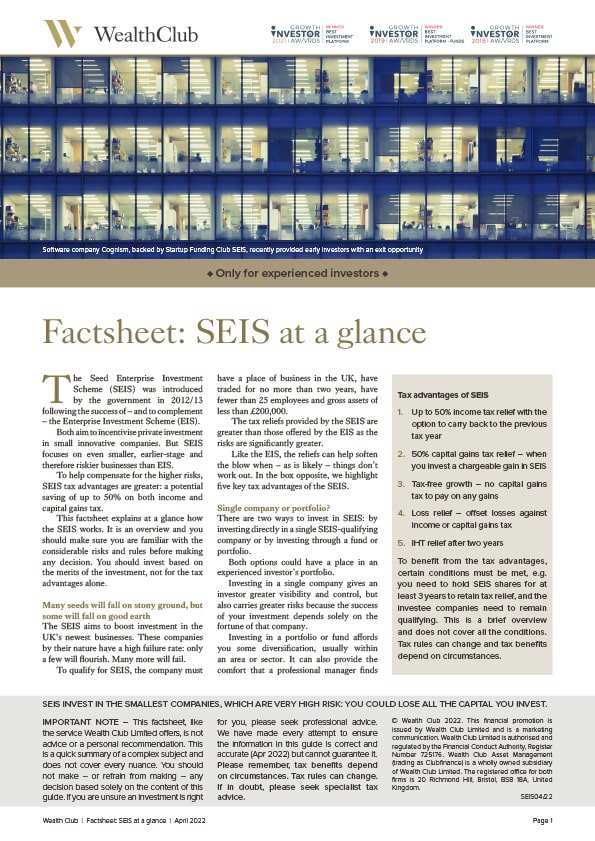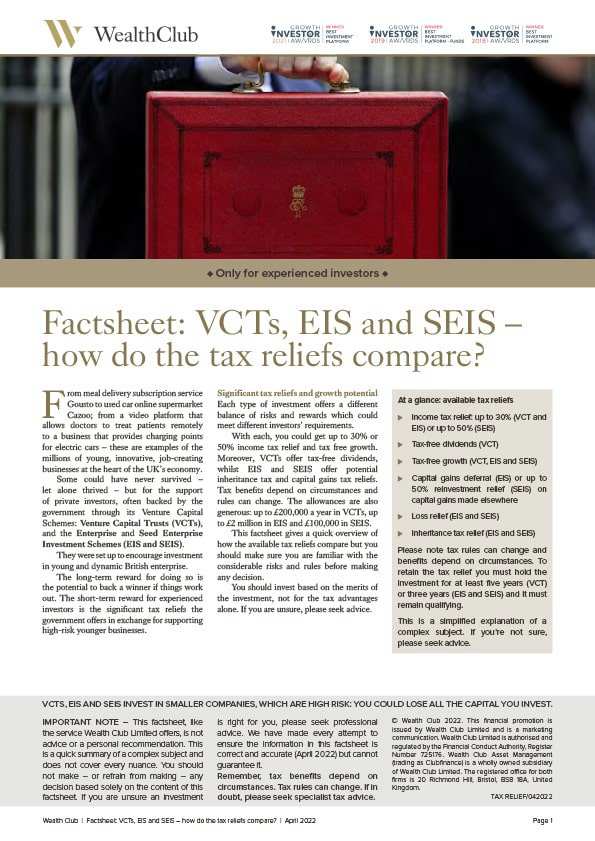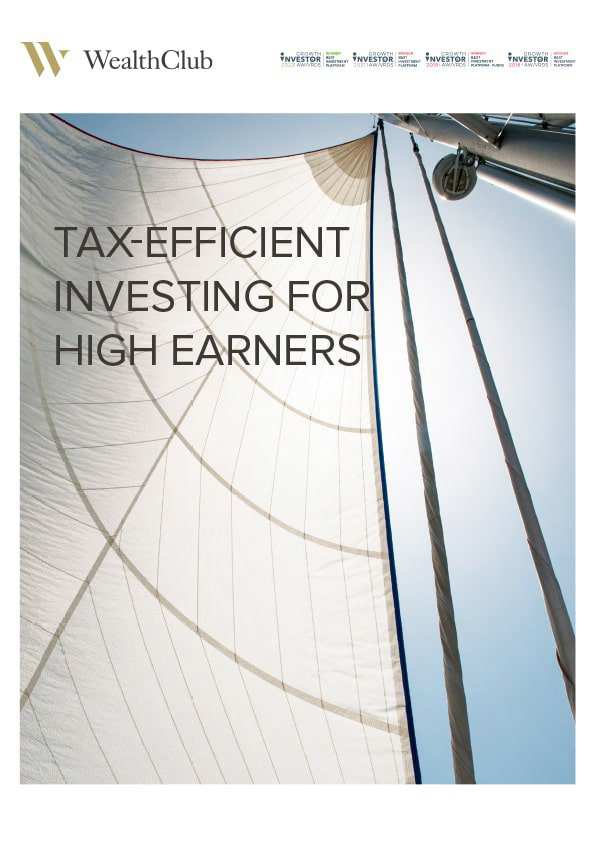Don't invest unless you’re prepared to lose all the money you invest. This is a high-risk investment and you are unlikely to be protected if something goes wrong. Take 2 mins to learn more.
Estimated reading time: 2 min
Due to the potential for losses, the Financial Conduct Authority (FCA) considers this investment to be high risk.
What are the key risks?
- You could lose all the money you invest
- If the business you invest in fails, you are likely to lose 100% of the money you invested. Most start-up businesses fail.
- You are unlikely to be protected if something goes wrong
- Protection from the Financial Services Compensation Scheme (FSCS), in relation to claims against failed regulated firms, does not cover poor investment performance. Try the FSCS investment protection checker here.
- Protection from the Financial Ombudsman Service (FOS) does not cover poor investment performance. If you have a complaint against an FCA-regulated firm, FOS may be able to consider it. Learn more about FOS protection here.
- You won’t get your money back quickly
- Even if the business you invest in is successful, it may take several years to get your money back. You are unlikely to be able to sell your investment early.
- The most likely way to get your money back is if the business is bought by another business or lists its shares on an exchange such as the London Stock Exchange. These events are not common.
- If you are investing in a start-up business, you should not expect to get your money back through dividends. Start-up businesses rarely pay these.
- Don’t put all your eggs in one basket
- Putting all your money into a single business or type of investment for example, is risky. Spreading your money across different investments makes you less dependent on any one to do well.
- A good rule of thumb is not to invest more than 10% of your money in high-risk investments.
- The value of your investment can be reduced
- The percentage of the business that you own will decrease if the business issues more shares. This could mean that the value of your investment reduces, depending on how much the business grows. Most start-up businesses issue multiple rounds of shares.
- These new shares could have additional rights that your shares don’t have, such as the right to receive a fixed dividend, which could further reduce your chances of getting a return on your investment.
If you are interested in learning more about how to protect yourself, visit the FCA’s website here.
Important: The information on this website is for experienced investors. It is not a personal recommendation to invest. If you’re unsure, please seek advice. Investments are for the long term. They are high risk and illiquid and can fall as well as rise in value: you could lose all the money you invest. Tax rules can change and benefits depend on circumstances.
Key SEIS facts
Read all or skip to the information you're after
What kind of companies qualify for SEIS investment?
SEIS-qualifying companies must be less than three years old, have fewer than 25 employees, gross assets of less than £350,000 and can receive no more than £250,000 funding through the SEIS.
As with EIS, some companies and sectors are excluded, including those dealing in land, commodities or shares.
Although the list of exclusions is quite long, it does leave you huge scope for investment. Over the past few years app development, music and film production companies have been popular investments.
Member exclusives
Latest guides & factsheets
Explore more about SEIS – download our free guides and factsheets
What are the tax advantages of SEIS investments?
You can benefit from a mix of upfront and ongoing SEIS tax reliefs:
- Up to 50% income tax relief
- Tax-free growth
- Up to 50% Capital Gains reinvestment relief
- Potential for inheritance tax relief
- Loss relief on exit
Please remember: tax rules can change and benefits depend on your circumstances. SEIS tax benefits are only available if the company maintains its SEIS status.
How much can I invest in SEIS?
The maximum amount you can invest under SEIS is £200,000 per tax year. The minimum investment will vary depending on the fund, but it is typically in the region of £10,000. A ‘carry back’ facility is also available.
Single company or portfolio?
There are two ways to invest in SEIS: by investing directly in a single SEIS-qualifying company or by investing through a fund or portfolio.
Both options could have a place in an experienced investor’s portfolio.
Investing in a single company gives an investor greater visibility and control, but also carries even greater risks because the success of your investment depends solely on the fortune of that company.
Investing in a portfolio or fund affords you some diversification, usually within an area or sector. It also gives you the comfort a professional manager is researching the opportunities and making the investment decisions for you.
On the flipside, you have far less control and visibility over where your money is invested. Moreover, the fund manager’s expertise comes at a price, so investing in a managed portfolio tends to be more expensive than investing in a single company.
Please remember: all SEIS investments are very high risk and are only suitable for experienced investors. Many SEIS companies – whether through a fund or a standalone investment – are likely to fail.
When will I be able to claim SEIS income tax relief?
You can claim the income tax relief after your shares are allotted and you receive your SEIS3 certificate.
SEIS portfolios tend to be evergreen and the portfolio manager will typically allot shares at regular intervals (it is normally possible to get an indication of when the next allotment is planned).
Single company SEIS offers tend to have a closing date – this can be either a set date or, more commonly, the point at which the fundraising target is met. Shares are normally allotted soon after the offer closes.
The date your shares are allotted (not the date you invested) will determine the investment date for tax purposes.
SEIS3 certificates are issued after the allotment and after the SEIS company receives confirmation from HMRC it has satisfied all the requirements.
Once you receive your SEIS3 certificate(s), you can claim the tax relief via your tax return. If you have already filed your tax return, you can still claim the relief.
A claim for SEIS tax relief can be submitted up to 5 years after the 31 January following the tax year in which the shares were issued. See how to claim SEIS tax relief »
When will my shares be allotted, so I can claim tax relief?
SEIS funds tend to be evergreen and shares will typically be allotted over the year, usually in tranches. It can take a few months from when you invest.
What is SEIS carry back?
SEIS investments offer a 'carry back' facility. You can elect for all or part of your SEIS shares acquired in one tax year to be treated as though they had been acquired in the previous tax year.
This gives SEIS investors the option to offset the tax relief against income tax from the previous year.
You can only do this if you have sufficient SEIS allowance in the tax year to which you’re carrying back.
What returns could SEIS investments offer?
Like EIS, any SEIS returns will be mostly in the form of capital growth, rather than dividends.
Each offer will normally indicate a target return, although this is a target only and is not guaranteed. Target returns vary significantly from around 1.3x to over 10x money invested. Typically, higher target returns indicate higher risks.
What are the charges?
SEIS fees vary widely and it is important to read this section of each SEIS offer document carefully. Individual SEIS companies may not levy any explicit charge, but administrative and other fees may be deducted as part of the costs of running the business. Managed portfolios of SEIS investments will typically levy an initial fee of 5-6% and annual fees of 2%. There will also typically be a performance fee.
How can I buy SEIS investments?
As with EIS, SEIS investments are not traded on the stock market, but you can invest through a specialist broker, such as Wealth Club.
There are several SEIS offers available. SEIS portfolio offers can be evergreen, so you could invest any time.
How can I sell my SEIS investment?
As SEIS shares are not traded on the stock market, you cannot sell them the way you would sell an investment trust. Instead, it is the managers’ responsibility to design an exit strategy that allows them to return capital and any tax-free growth to investors.
The manager will usually give an indication of the targeted exit strategy and timeframe (from 5-7 years to 10+ years) at the outset. Common strategies include management buy-outs, trade sales or refinancing. However, there are no guarantees.
Please note, SEIS are long-term investments. The minimum holding period to retain the income tax relief is three years but you should expect to hold the share for considerably longer than this.
What are the key risks of SEIS investments?
As with all investments, your capital is at risk.
However, as they invest in very small companies, this risk is far greater with the SEIS than with other investments. Small companies are more volatile and more likely to fail than their larger counterparts. You could lose the entire value of your investment.
For this reason, SEIS investments are long-term investments and are not for everyone. They are for high net worth or sophisticated investors who have no need for immediate liquidity and are able to withstand a potential total loss.
In addition, as there is no recognised market for these shares, SEIS investments are less liquid than stock market investments and they will be harder to sell.
Lastly, to retain all the tax reliefs available, you must hold the investment for a minimum period of three years and the companies must retain their qualifying status. Otherwise, you may have to pay back the income tax relief you have received.
Please remember, all the tax and products rules mentioned here are those currently applying but could change in future. Tax benefits depend on circumstances.
Who might consider investing in SEIS?
SEIS investments are for experienced or wealthy investors, as part of a diversified portfolio.
They could be particularly attractive to investors with a large income or capital gains tax bill who are looking for growth opportunities. You can read more on the SEIS tax relief page.
Read more on...
Stay in the know
Insights & updates
-
Fifth profitable exit for Haatch investors this year: QIS Risk
Haatch Ventures announced its exit of institutional risk management software QIS Risk. This is the fifth exit for Haatch's EIS and SEIS funds in 2025. Read the full story and see how you could invest in similar companies.

-
Budget tax hikes – what can investors do?
In her pre-Budget speech on 4 November, Chancellor Rachel Reeves prepares the ground for new “necessary” tax hikes with a call for “all” to contribute. What can investors do? Read full article

-
Fourth profitable exit in 2025 for Haatch and Wealth Club investors: fintech Tangible Markets
What does Tangible Markets do? Why did Haatch invest and how might you invest in similar companies? Read more...





